Creating a library that truly serves its community requires more than following design best practices—it demands a deep understanding of local needs, culture, and aspirations. For library administrators and civic leaders, investing in community engagement during the design process leads to facilities that become cherished public resources and centers of community life.
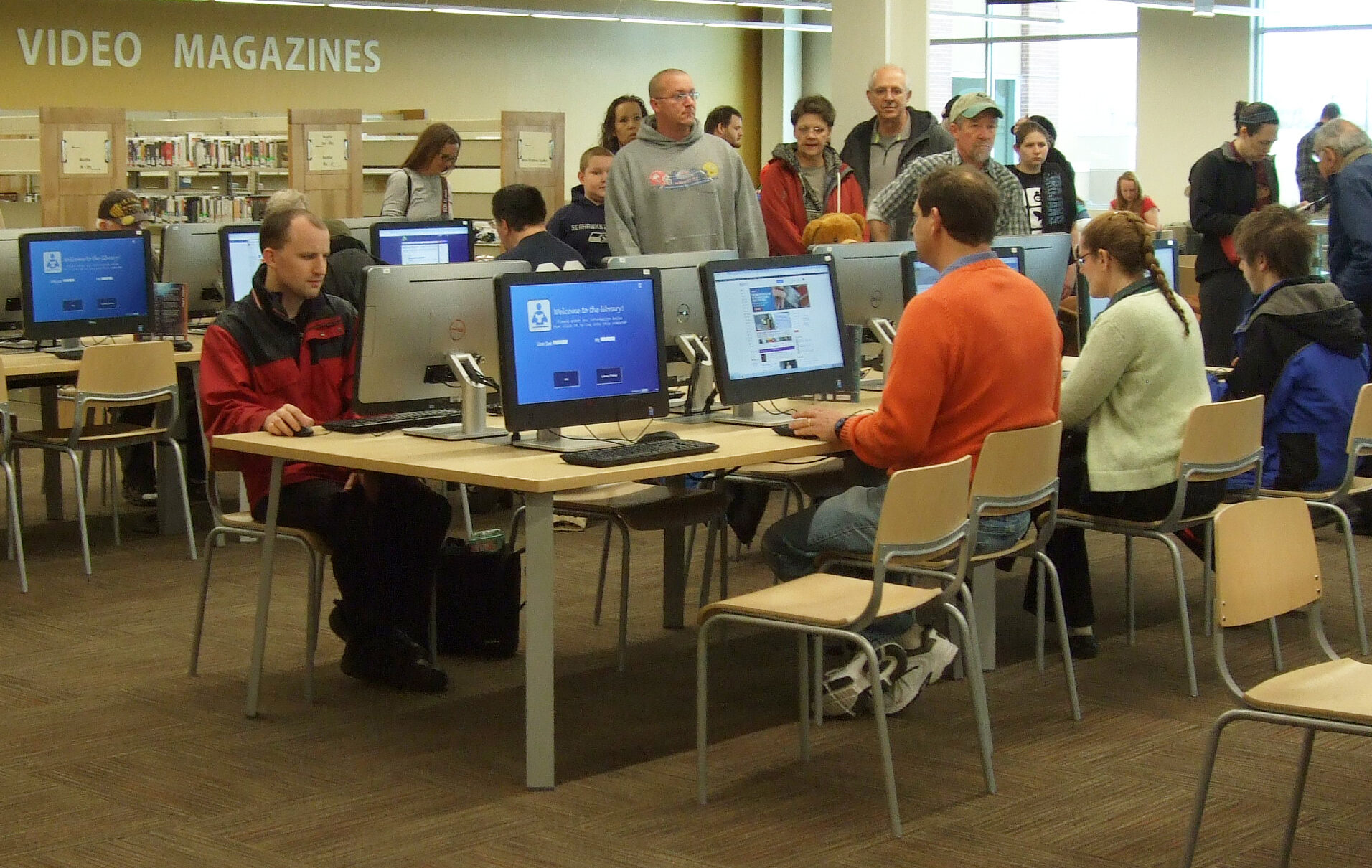
Understanding Community Needs
The process of designing a community-centered library begins long before the first architectural drawing. It starts with comprehensive stakeholder engagement that varies significantly between public and academic libraries, reflecting their distinct missions and user bases.
For public libraries, engagement must cast a wide net, incorporating voices from across the community. This can include:
Online surveys through library websites
Public workshops and presentations
Focused group discussions
Targeted outreach to underrepresented communities
Collaboration with local cultural organizations
While serving a more defined population, academic libraries must still engage multiple stakeholder groups, including students, faculty, researchers, and staff. Each brings unique perspectives on how the space should function.
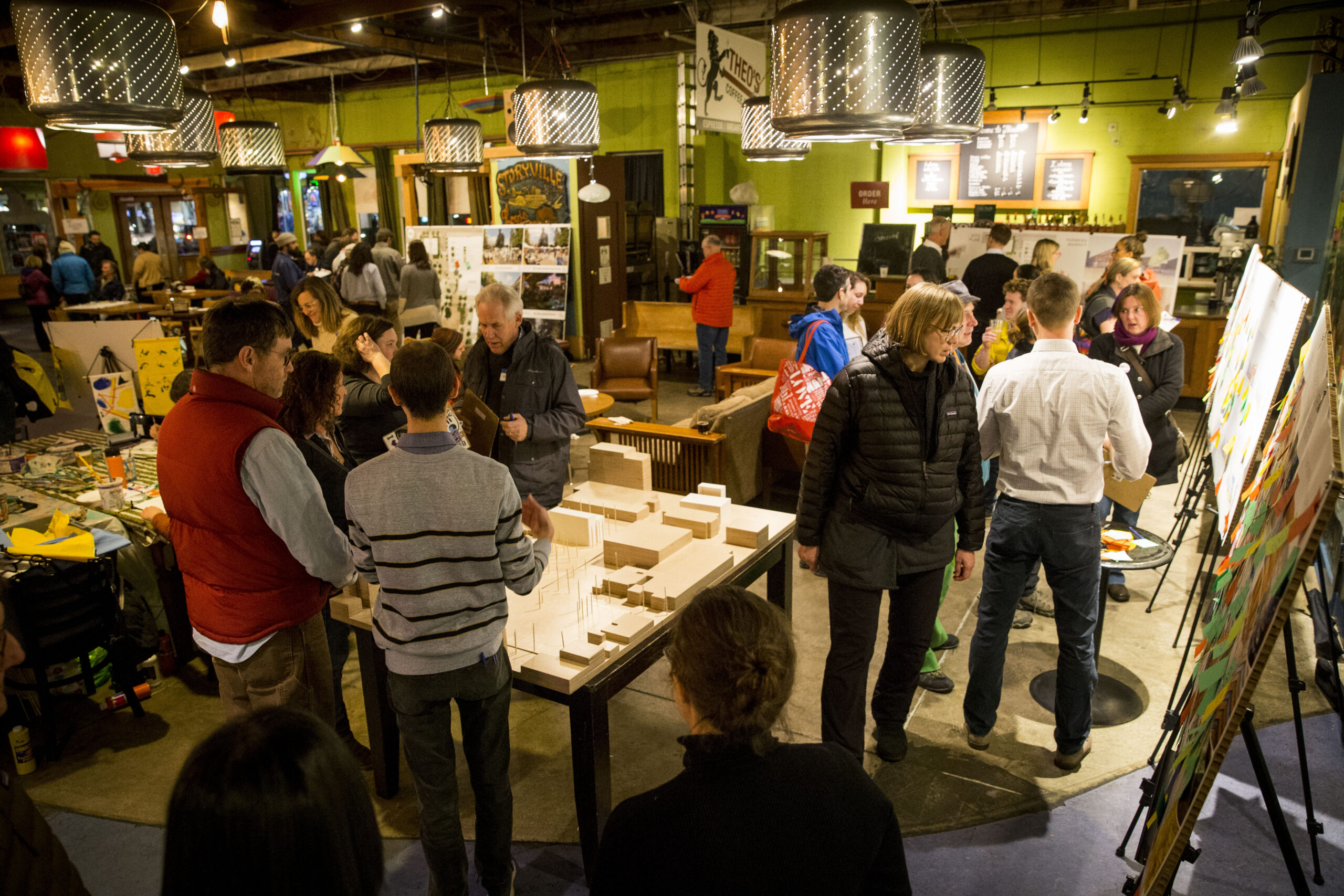
Translating Input into Design
The challenge lies in transforming community input into architectural solutions that serve multiple needs while maintaining coherence and functionality. This requires careful interpretation of feedback and creative problem-solving.
Consider Boise’s Library! at Bown Crossing, where community input directly shaped exterior and interior design choices. The use of local sandstone on the exterior created a connection to the historic Bown House and nearby Treasure Valley, while the exposed mass timber roof deck and extensive wood finishes delivered the warm, welcoming atmosphere residents requested. These design choices demonstrate how community preferences can be honored while maintaining architectural excellence.
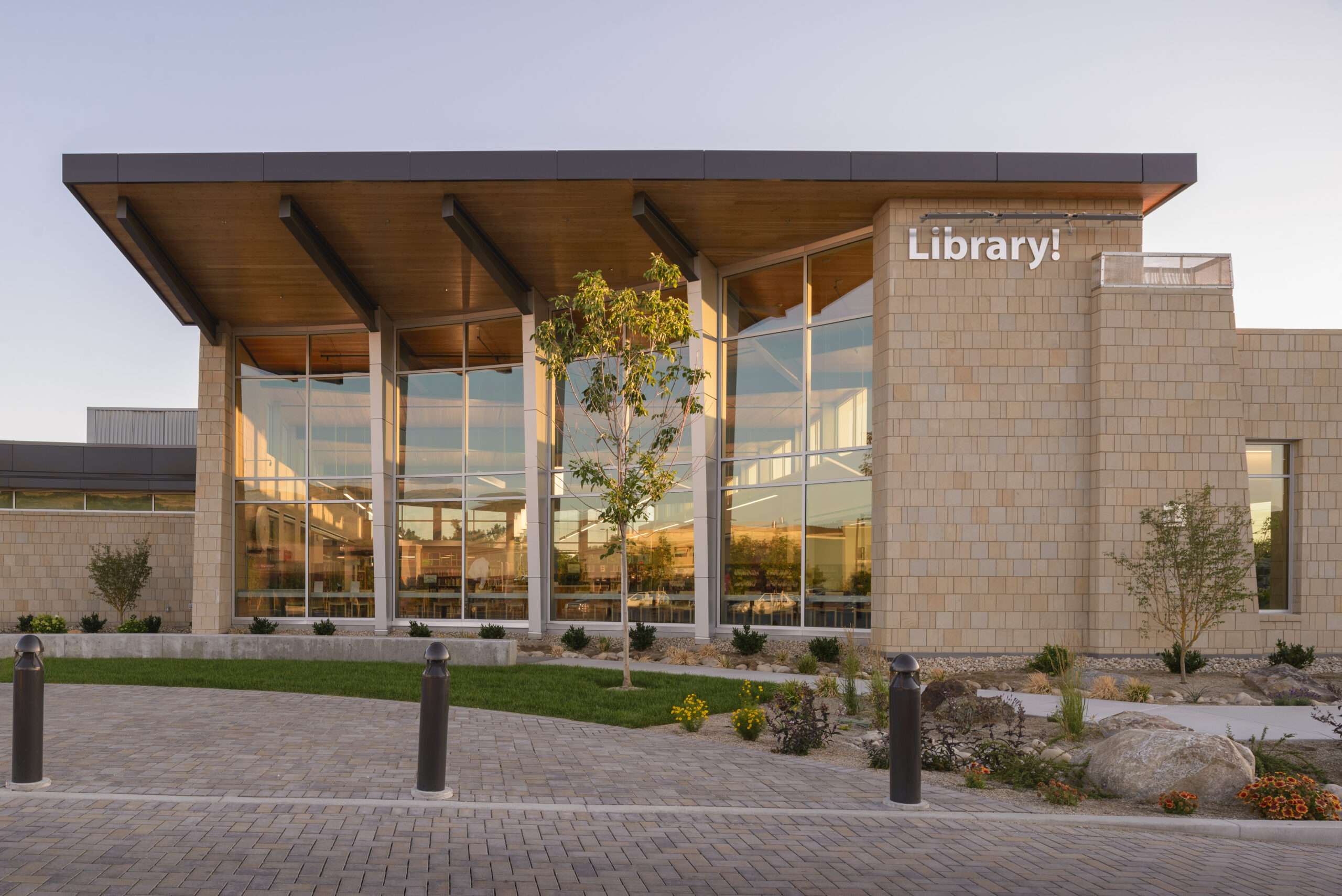
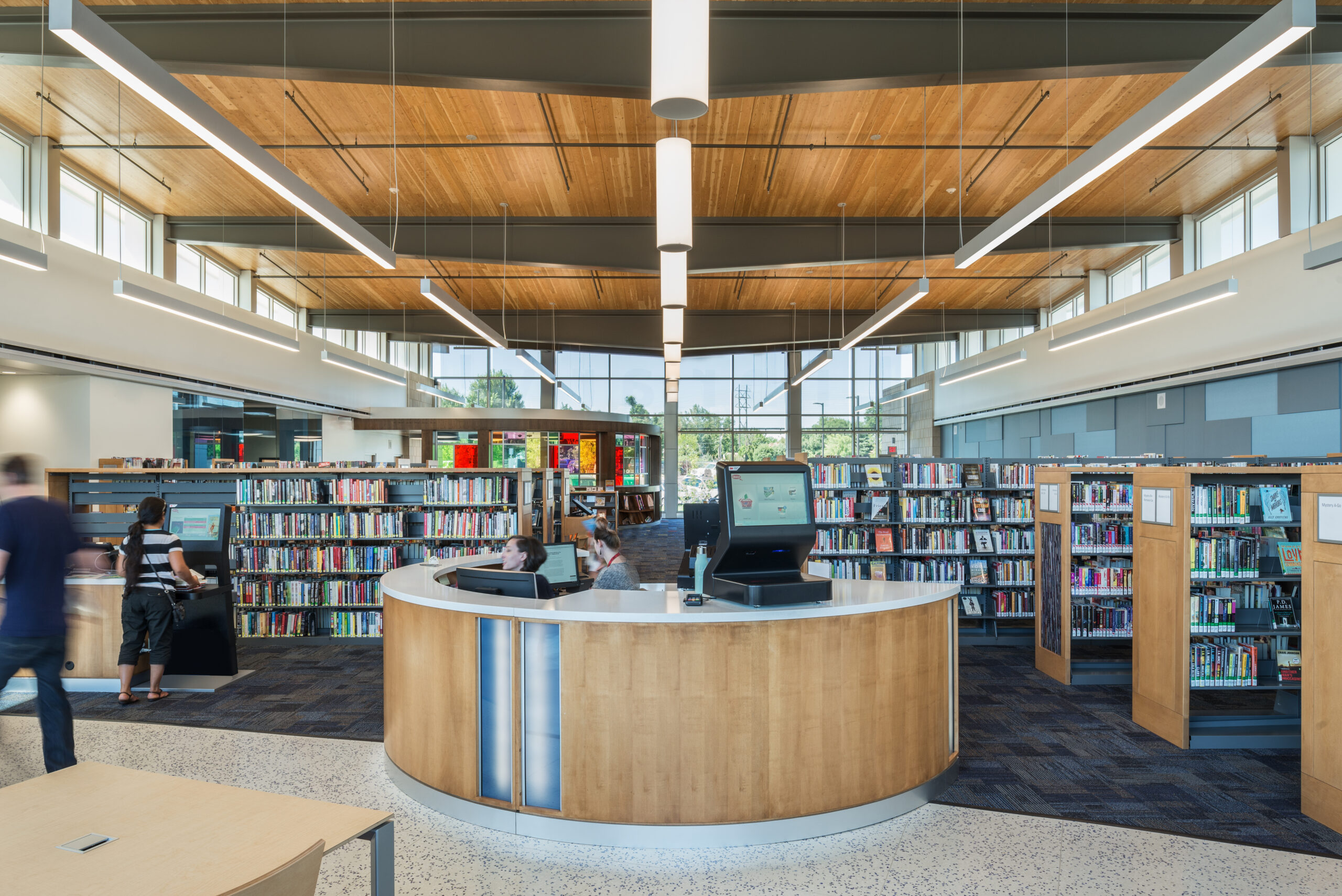
Bridging the Digital Divide
Modern library design must address technology access disparities within communities. This extends beyond simply providing computers—it requires thoughtful design that supports equitable access to digital resources:
Physical Design Considerations:
Comfortable, well-lit spaces for extended device use
Flexible seating arrangements that accommodate various work styles
Adequate power access throughout the facility
Secure storage for device lending programs
Private spaces for video conferencing and remote work
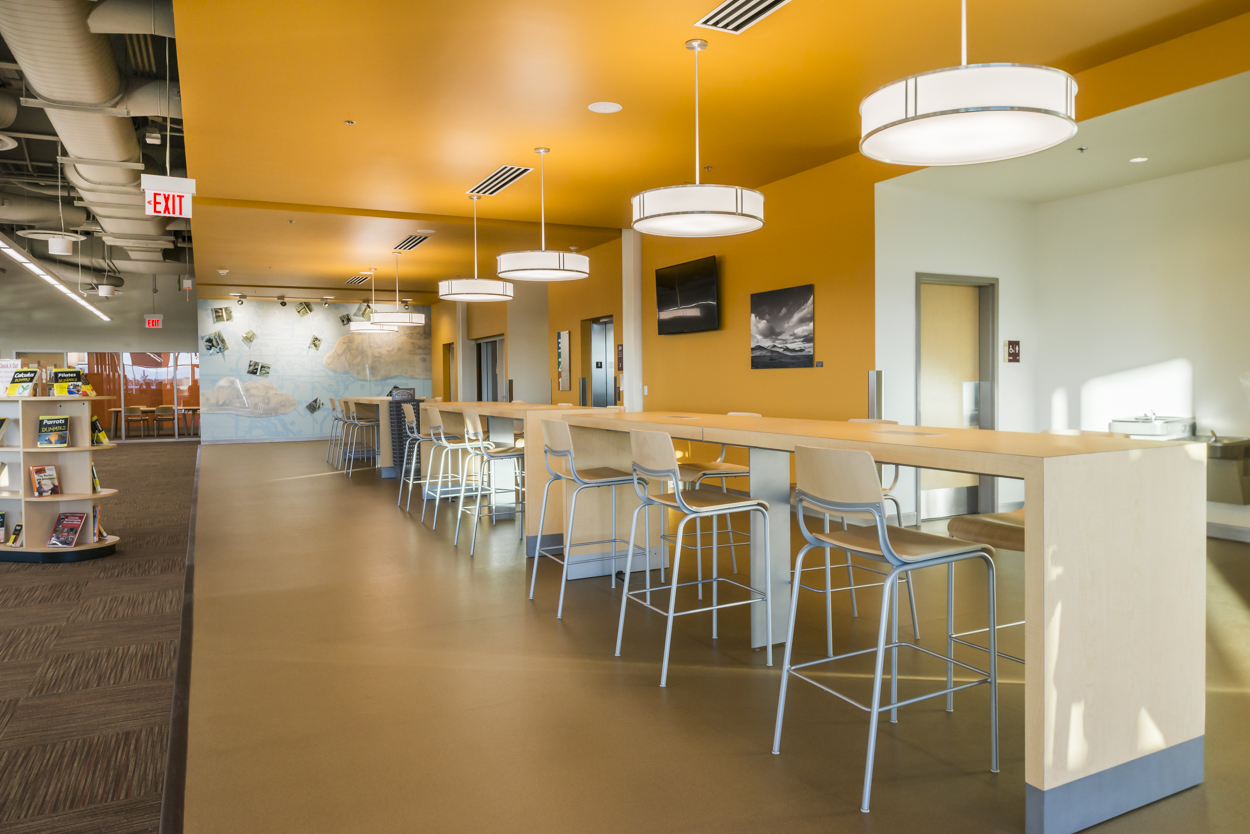
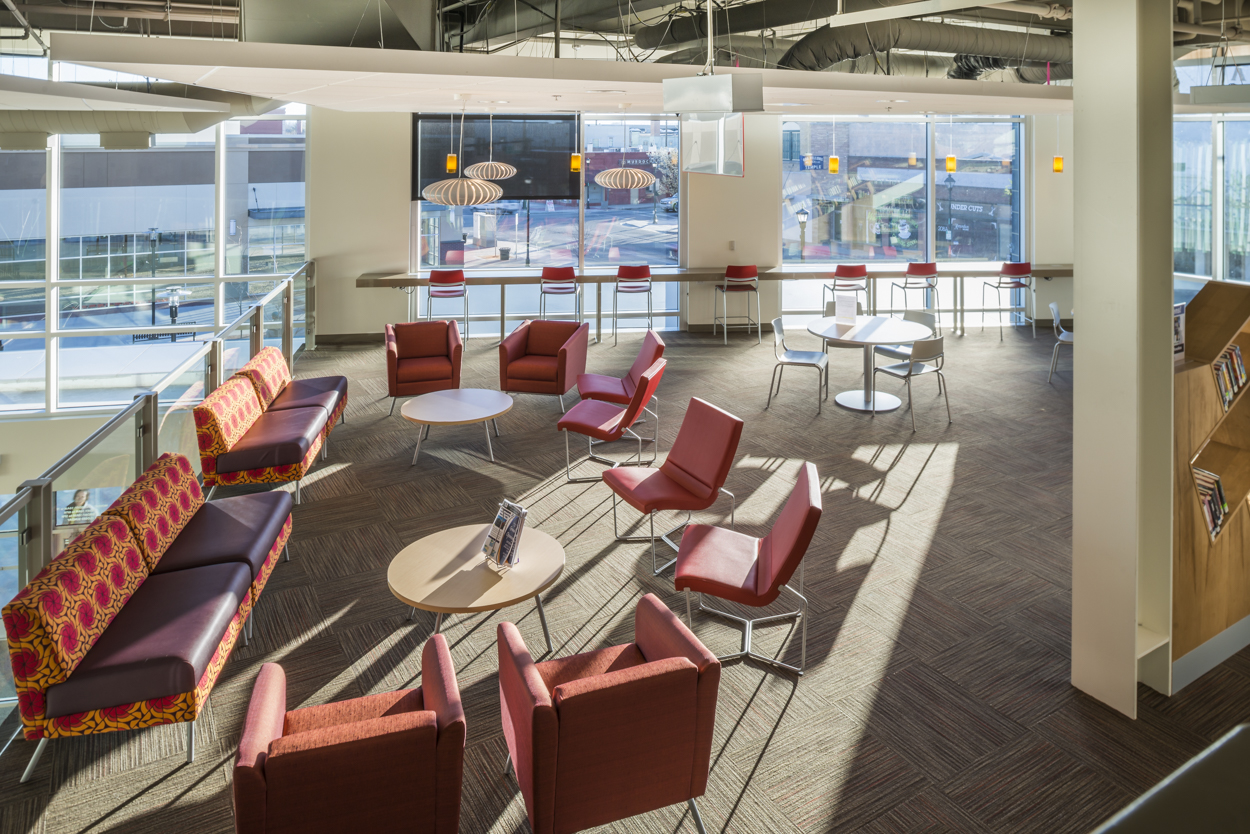
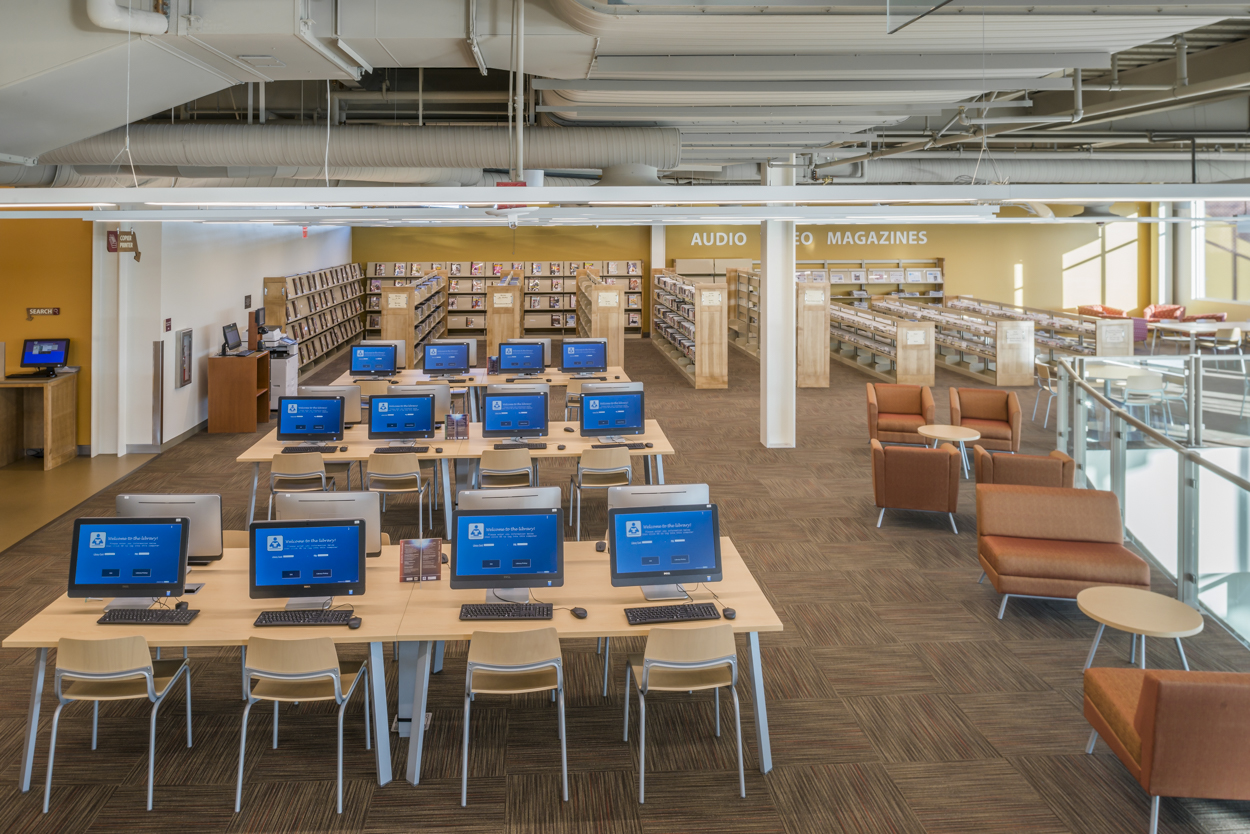
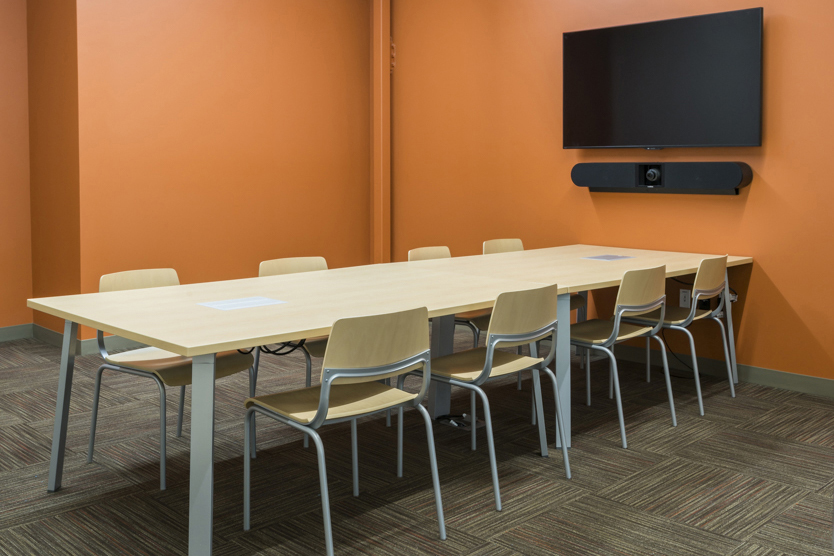
Cultural Identity in Design
Every community has unique characteristics that should be reflected in their library’s design. This cultural integration can take many forms:
Local history collections and display spaces
Cultural gardens or outdoor gathering areas
Public art installations featuring local artists
Interior color schemes inspired by regional elements
Materials and patterns that reflect community heritage
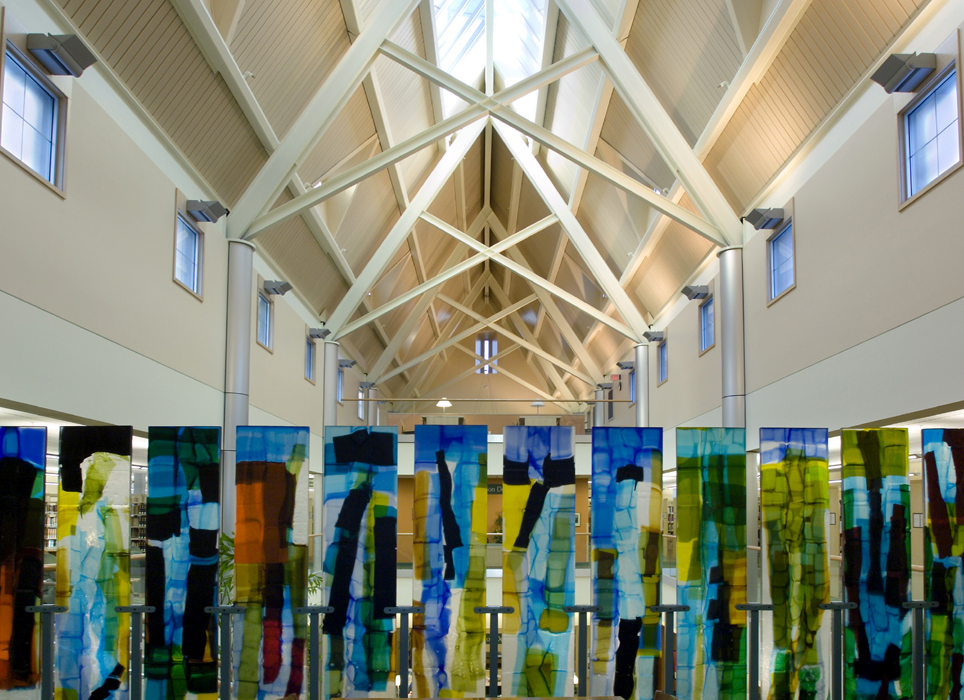
Creating Multi-Purpose Spaces
Modern libraries must serve as platforms for a wide range of community activities. Successful designs achieve this through:
Flexible Meeting Spaces:
Movable walls to accommodate varying group sizes
Built-in technology infrastructure for presentations
Storage areas for different configurations
Adjacent support spaces like kitchenettes
Separate access for after-hours events
Individual and Group Areas:
Quiet study zones
Collaborative workspaces
Children’s areas with appropriate acoustical separation
Teen spaces that provide both privacy and supervision
Maker spaces and creative areas
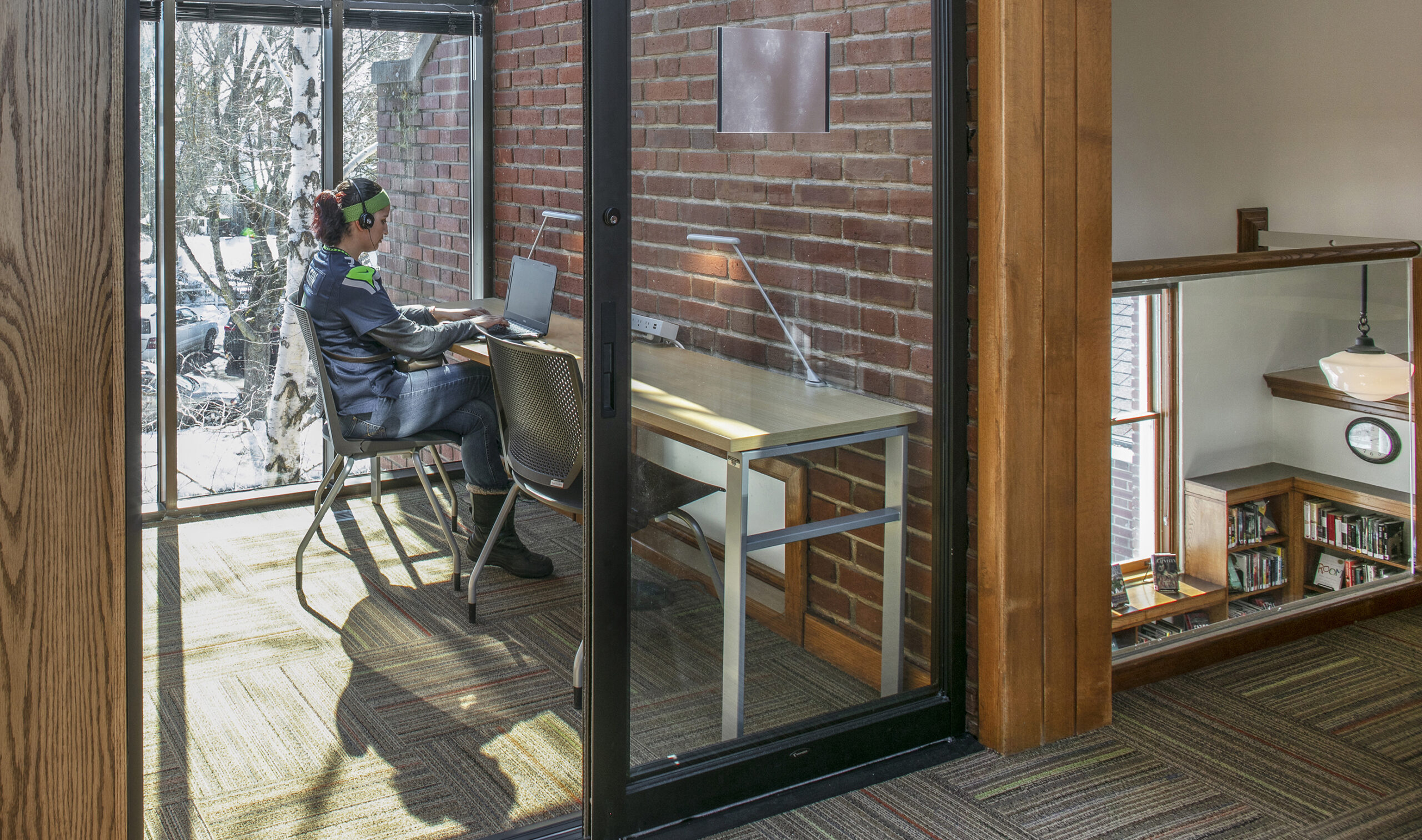
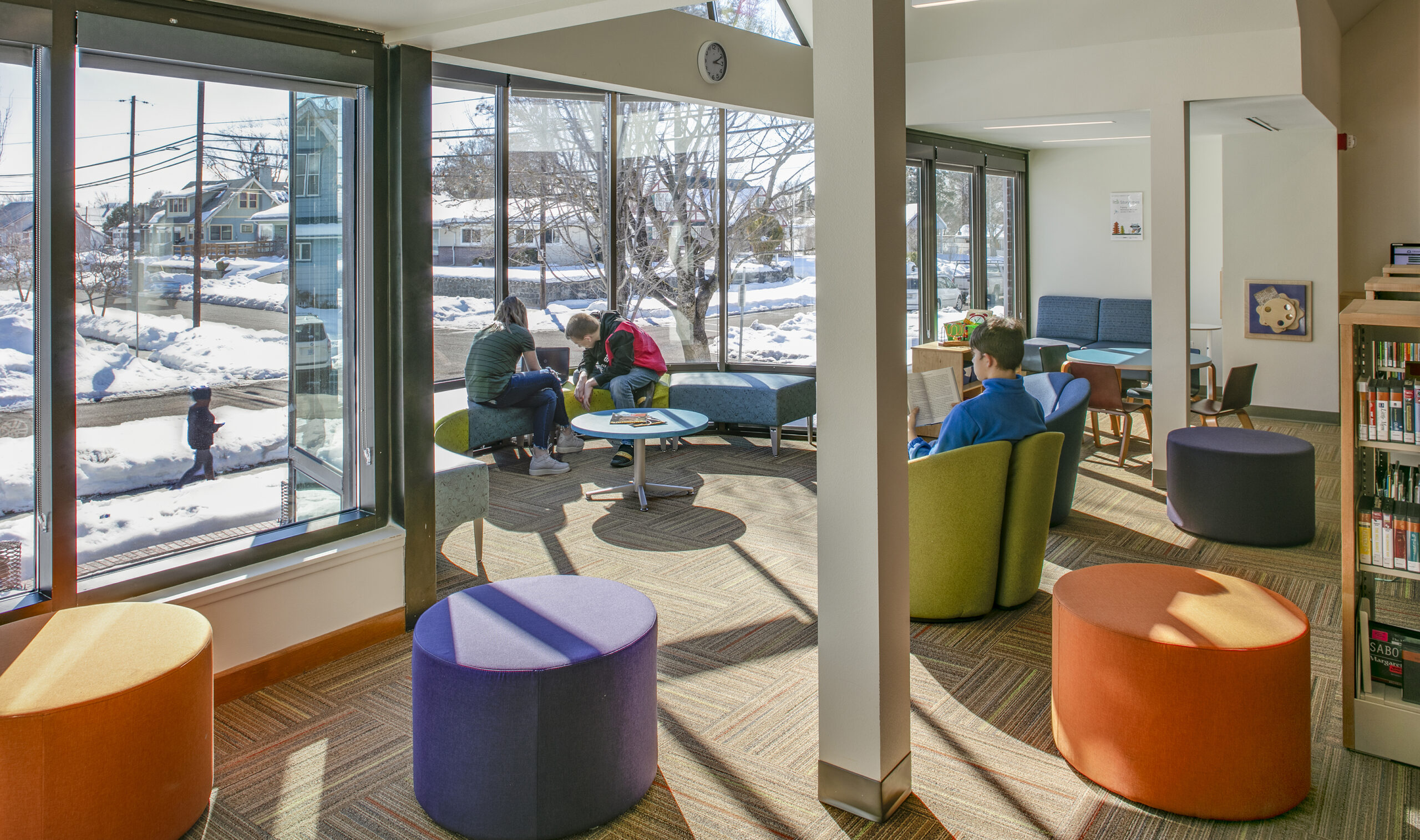
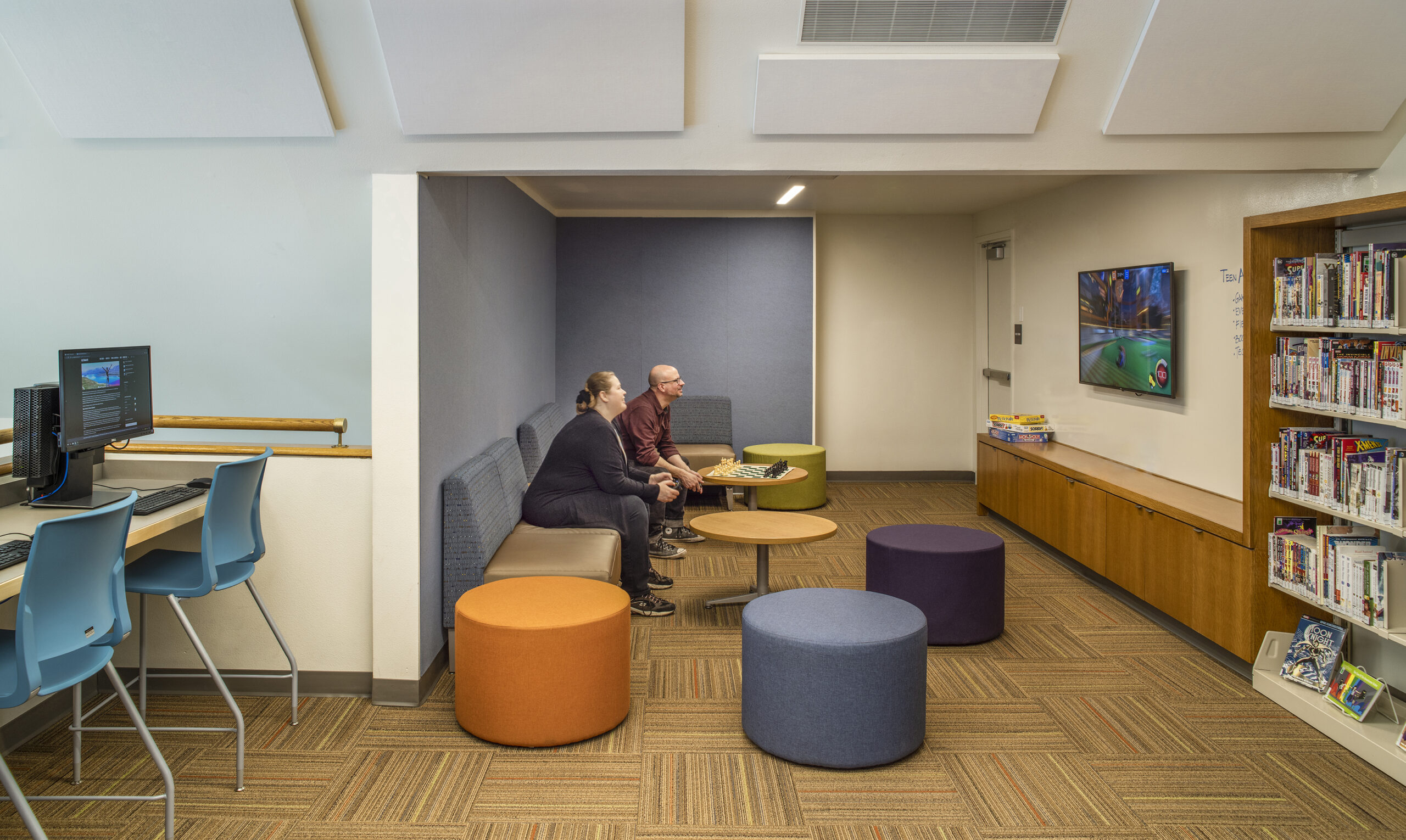
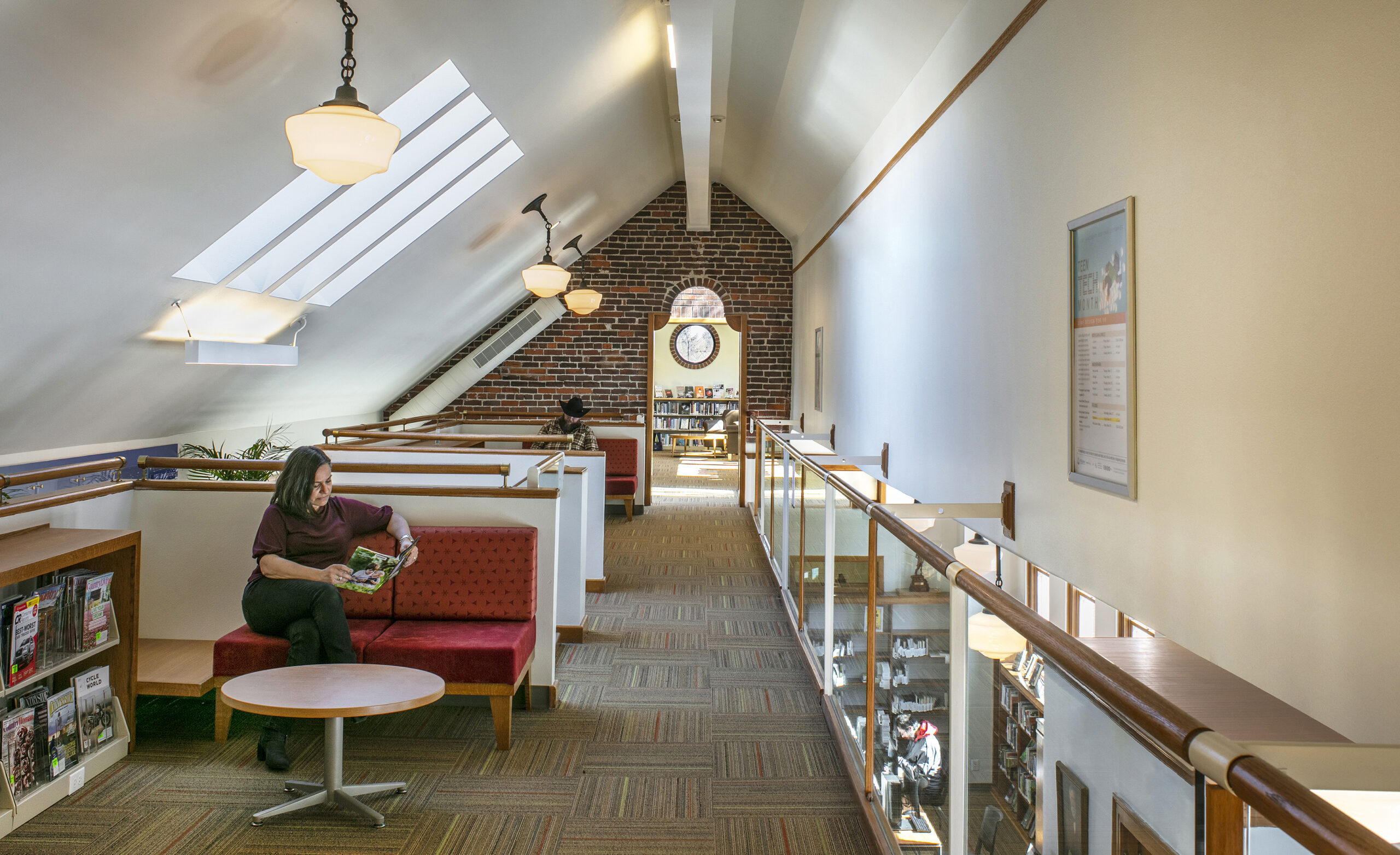
Measuring Success
The success of a community-centered library design can be measured through:
Usage patterns across different times and user groups
Community feedback and satisfaction surveys
Programming flexibility and adaptation
Long-term maintenance and operational efficiency
Integration with broader community initiatives
Looking Forward
As communities evolve, their libraries must adapt while maintaining their role as essential public resources. The most successful designs achieve this by creating spaces that are both specific to their communities and flexible enough to accommodate change.
For decision-makers planning library projects, the investment in thorough community engagement and thoughtful design interpretation pays dividends in creating spaces that truly serve their communities. When libraries reflect their communities while anticipating future needs, they become not just buildings but vital centers of public life.
“A well-designed library is more than a public amenity—it’s a reflection of community values and aspirations, made concrete in brick and mortar.”
